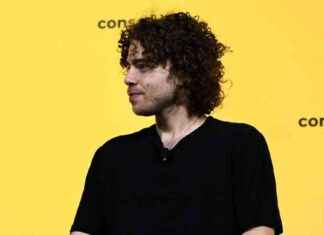A Unified Theory of Consciousness Could Be on the Cusp
An EU team of neuroscientists asked their peers: “Can’t we all just get along?” They analyzed how five major theories of consciousness overlap in both fundamentals and details. Ultimately, consciousness is not well understood at all—everyone could be right and wrong.
In newly published research, a full baseball team worth of neuroscientists from around Europe have combined their theories of the mechanics of consciousness. By breaking theories into pieces and comparing like with like, the scientists realized that certain kinds of experimentation can answer several questions at once across the different theories. Why reinvent the wheel, or better yet, reinvent the science grant-funded experiment? In the journal Neuron, the group laid out their new, collaborative approach to brain science.
These researchers (hailing from universities in Netherlands, German, Italy, Estonia, and more) have come together from the Human Brain Project—a European Union-created committee of scientists from many disciplines who all collaborated towards the goal of accelerating research on the human brain. The project lasted from 2013 to 2023, so it’s not surprising that two high-profile neuroscience papers have come from this larger group in the first half of 2024. The other is a position paper in the MIT journal Imaging Neuroscience that was coauthored by dozens of scientists and supported by many more.
Even outsiders can see there are some workplace and industry politics rumbling below these two papers. Someone writing a manifesto or pushing a new model of collaboration is speaking against a status quo in some way. Indeed, while some areas of scientific research are more collaborative in a public way (like nuclear fusion research facilities around the world that trade top-tier scientists like ace pitchers), others (like many human sciences and national defense) become proprietary as companies, governments, and universities seek to patent their work.
“Historically, most researchers have emphasized the development and validation of their preferred theoretical framework in isolation,” the researchers wrote. “[W]e show that many aspects of the various theories of consciousness do not necessarily contradict each other, as sometimes claimed; instead, theories often try to explain different aspects of consciousness and tend to converge on fundamental neuronal mechanisms and processes.”
In other words, researchers are agreeing on many of their findings—at least, as far as physical observations inside the brain and its cells go. It’s only in the subsequent steps, where scientists form theories to explain what they’re seeing, that differences begin to seem insurmountable. To study this in more depth, this paper’s authors chose five major working theories of consciousness. These cover three of the four suggested types of models laid out by two influential neuroscientists.
All five theories, according to the researchers, share two major underpinnings: recurrent processing and integration. There are also nitty-gritty qualities that subgroups share, like the main role of the brain’s posterior cortex or the importance of localized feedback within the brain’s microcircuitry. Overall, they say, there are some interesting convergences on each level of granularity. And that could be a key first step to building a unified theory of consciousness. Perhaps more importantly, the researchers explained, the wide spread of theories “has even led to accusations of illegitimacy between competing theories”—something that could stop with more understanding. After all, there‘s still an enormous amount we don’t know about consciousness or the physical structures of the brain. At the end of the day (or century!), just one theory will prove to be entirely correct. When that happens, there will be a lot of excitement—and a lot of humble pie.
Caroline Delbert is a writer, avid reader, and contributing editor at Pop Mech. She’s also an enthusiast of just about everything. Her favorite topics include nuclear energy, cosmology, math of everyday things, and the philosophy of it all.









